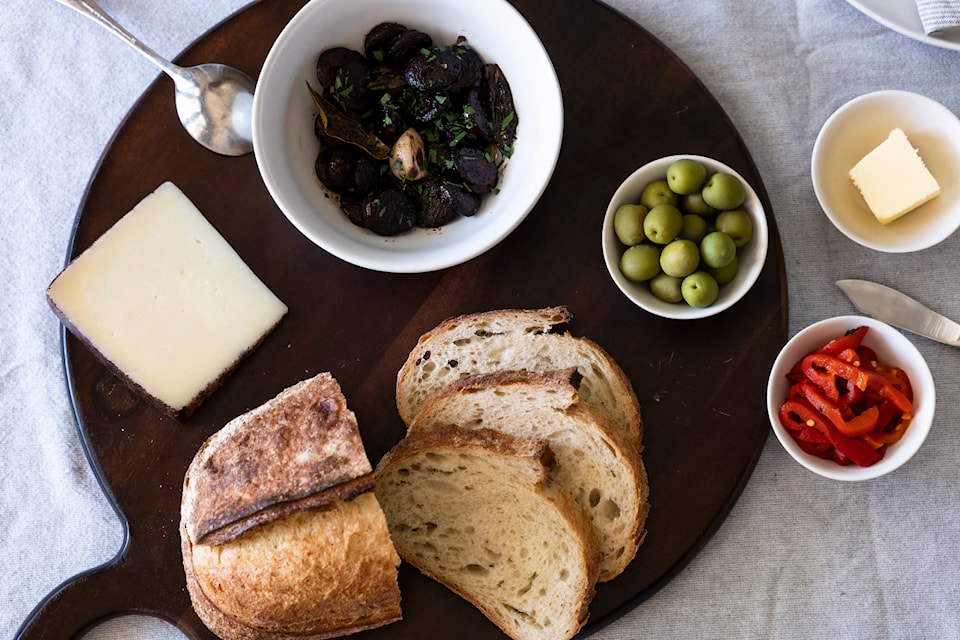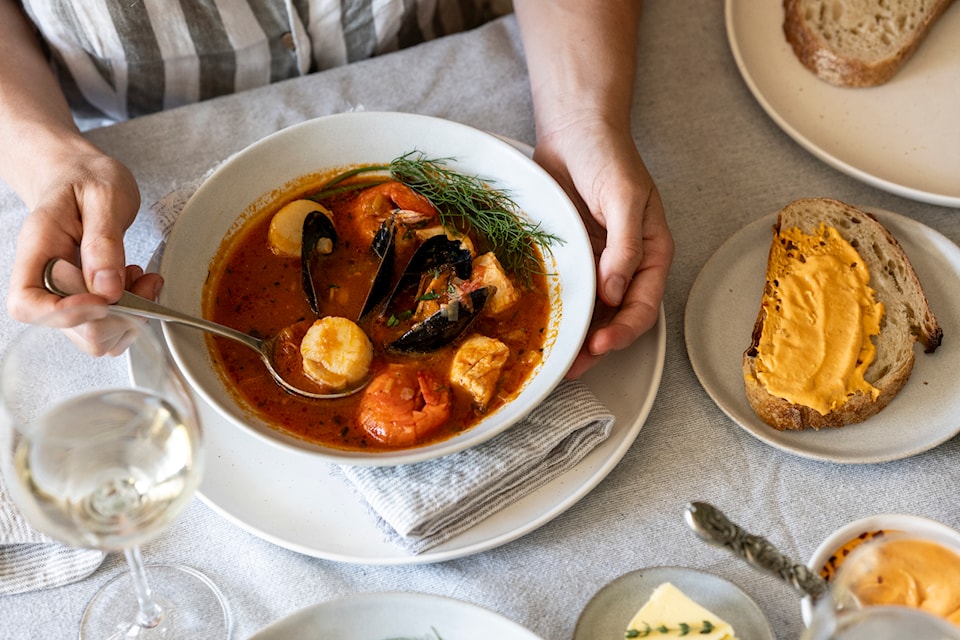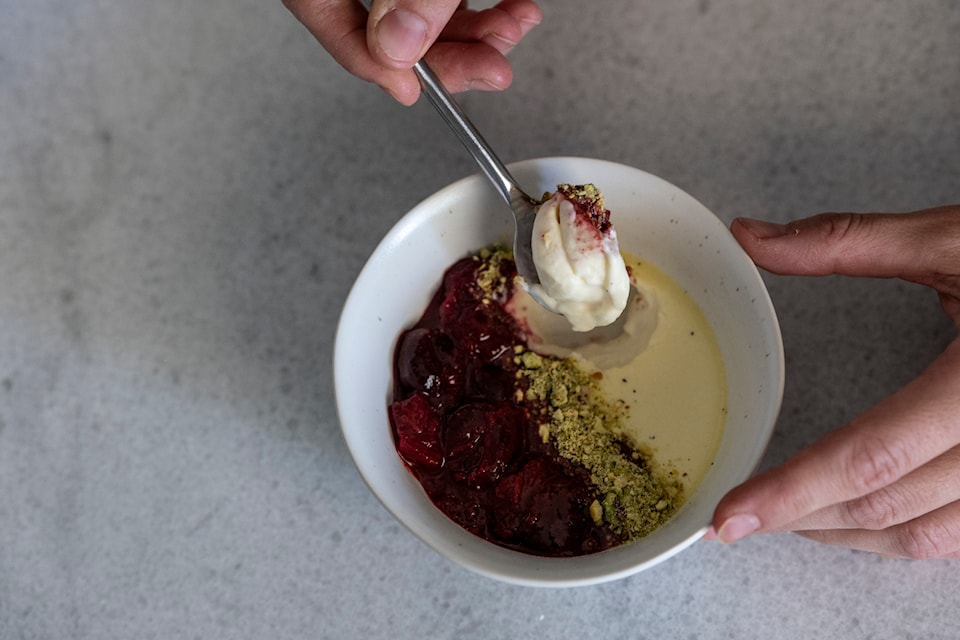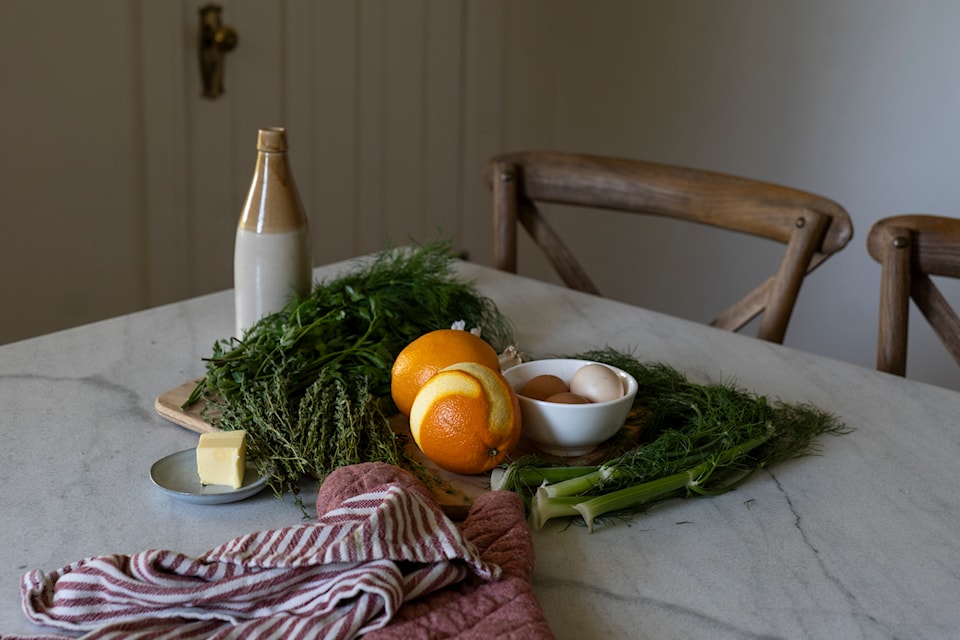When I worked as a clinical nutritionist, many clients shared with me that when travelling throughout Europe, they could enjoy several foods that might otherwise be challenging. They would eat bread without belly bloat, or consume copious quantities of dairy without stomach cramps. All food seemed to sit better, and their digestion and overall sense of wellness around mealtimes improved. I’ve had similar experiences when I found myself travelling, cooking and studying in dreamy distant places.
There are some solid explanations for the phenomenon: the types of ingredients, mealtime sentiments and philosophies around food that seem to feed the body, and even the soul, in ways that can be missed in the more fast-paced, convenience-based North American approaches to what and how we eat.
The following are a few tips and concepts that explore these very approaches, in the hopes that by incorporating some elements of food-based travel bliss into your at-home, day-to-day consumption you notice shifts and changes in your digestion, mealtime satisfaction and overall sense of wellbeing.
It’s worth mentioning that “Europhilia” – admiration for Europe and Europeans – can be problematic, and the overly romantic ideal of how others eat (and live) throughout the world is often reductive, selective, limited or simply inaccurate.
With that said, the following is a collection of concepts I’ve come across on my own or discovered from folks I know who are from places like Italy, France, Spain and Portugal, and who confirm that these old-world European approaches are often the prevailing ethos when it comes to gastronomy.
Ingredients over products
Fresh herbs, extra virgin olive oil, butter, freshly squeezed lemon juice, good garlic and high-quality sea salt: many chefs and European cooks will say that it’s not as much the recipe that matters as it is the ingredients that go into the dish, and beyond even these basics, you don’t need much else to create a sensational meal.
Combined with some freshly caught seafood, a quality cut of meat or some seasonal veggies, you’re most of the way to making a masterpiece. The fresher and higher-quality the ingredients, the greater the nutrient density.
The greater the nutrient density, the greater the sense of satisfaction from a cellular level; and this affects us physically, mentally and even emotionally. Start focusing on fresh, in-season, high-quality and thoughtfully sourced ingredients over ultra-processed and mega-mass-made products and you’ll notice a difference in how things taste, and perhaps how you feel.
Slow it down
There’s a prevailing old-world priority of elongated and enjoyable food-based experiences. It begins with the mindful selection of ingredients, perhaps from a farm-fresh market. After this comes the cooking. Literally getting your hands involved in the process has been shown to benefit body and mind on many levels.
Once the meal is made and the table is set, sitting down and savouring each bite allows your body to do its thing digestively, which can make a massive difference in how it reacts to food.
The European tradition of sitting for what sometimes seems like an exceptionally long time is a great way to relax and enjoy, and offer the body ample time to rest, digest and integrate the meal. I say all this as a mother of two small children, where mealtimes often feel chaotic, and the idea of an elongated dining experience seems unattainable most days.
What I remind myself is that it doesn’t have to be every meal – having even one meal a week that is intentionally set as a special sit-down take-it-slow occasion may make a difference.
A family (and friend) affair
Classic old-world culture emphasizes community at mealtimes, featuring multiple generations, with young children running around, babies on laps, friends stopping by – it’s an open-table and open-heart policy where there’s always room for one more.
These collective culinary experiences don’t just take the pressure off in terms of cooking load and clean-up (many hands make light work, after all), but having loved ones around brightens the mood, enlivens the conversation and creates a culture of food joy from an early age.
The warm, loving atmosphere boosts feel-good hormones, which has a positive effect on digestion and nutrient absorption. Once again, the calmer and happier you are around mealtimes, the better your body can integrate the nourishment, and the less likelihood of digestive upset.

Chorizo al Vino Tinto with Orange and Honey
Much like apéro in France, tapas are a fixture in Spain. While sometimes offered as a way to warm up the belly before a meal, it is just as common to have an entire meal made of tapas. Enjoy this on slices of rustic bread, or just as is, for a satisfying start to your meal.
Prep time: 5 minutes
Cook time: 20 minutes
Makes about 4 servings
Ingredients
Extra virgin olive oil
6 oz cured chorizo
1 cup red wine (for example, Rioja or Tempranillo)
1 tbsp honey
1 - 2 bay leaves
1 - 2 large orange peel strips (you can use a vegetable peeler to shave off a couple slices of rind)
2 - 4 cloves garlic, peeled but left whole
Chopped parsley to garnish
Cut the chorizo into even slices (around a quarter-inch thick). Heat a medium-sized frying pan on medium heat and coat the bottom with olive oil. Arrange the chorizo slices in a single layer and cook for 1-3 minutes, until starting to crisp, and then turn over. Cook for a couple minutes on the other side, then add the wine and honey to the pan. Tuck the bay leaf, orange rind and garlic in between or under the chorizo slices.
Once the wine comes to the boil, reduce the heat slightly and simmer for 15-20 minutes, until the wine becomes more syrup-like. Remove from the heat and serve topped with a sprinkling of chopped parsley.

Simple Bouillabaisse with Roasted Red Pepper Rouille
Bouillabaisse is one of those recipes that seem intimidating at first, but once you’ve given it a try, it might quickly become a staple in your summertime rotation. I make the base ahead of time, and then reheat and add in the fresh seafood before serving. Even if you don’t make the bouillabaisse, you might want to give the rouille a try. Traditionally served with bread as a side to bouillabaisse, it’s one of those magic sauces that enhances almost every meal. This rouille is a fantastic flavour-forward mayo substitute in sandwiches.
Prep time: 20 minutes
Cook time: 30 minutes
Makes about 4 servings
Ingredients for the bouillabaisse
Extra virgin olive oil and/or unsalted butter (I use a combination of both, about ¼ cup olive oil and ¼ cup butter)
3-4 cloves of garlic, peeled and minced
1-2 leeks, white parts only, washed and thinly sliced
1 fennel bulb, thinly sliced
2 tbsp tomato paste
1 (14-ounce) can plum tomatoes, chopped
3 - 4 cups fish broth
2 orange peel strips
Pinch of saffron
1 - 2 bay leaves
3 - 4 sprigs fresh thyme
Salt and pepper to taste
1 ounce Pernod (or other pastis)
1 lb white fish, skinned and cut into 2-inch pieces
1 lb clams and/or mussels cleaned and scrubbed well
About ½ lb prawns
About ½ lb scallops
Fresh herbs for garnish (parsley, dill, etc.)
Ingredients for the rouille
1 tbsp water
1 tbsp white wine vinegar
Pinch of saffron
1 slice rustic white bread, crusts removed and cut into chunks
3 - 4 cloves garlic, peeled
2 large egg yolks
¼ tsp chili flakes
½ cup olive oil
1 roasted red pepper, seeded (I use the store-bought jarred ones, but you can make your own at home)
Salt to taste
Bring a large Dutch oven to medium heat and add olive oil and/or butter. Once melted, add the leeks and fennel and sauté until softened and fragrant, but not browned (2-3 minutes). Add the garlic and sauté for another minute. Stir in the tomato paste for another 30 seconds. Add the canned tomatoes, with their juices, along with the saffron, and sauté for another 3-4 minutes.
Pour in the seafood stock and Pernod, and nestle in the fresh thyme, bay leaf and orange peel. Simmer for 15-20 minutes. While simmering, add the fish that takes longer to cook (like the halibut and cod), and simmer for 3-4 minutes.
Next, add the mussels and/or clams and cook for another 3-4 minutes. Then add the scallops and cook 2-3 minutes, and, finally, add the prawns and cook for another 2-3 minutes. At this point, the fish should be cooked through, and mussels and clams just opened. Remove the bouillabaisse from heat and taste the broth for seasoning.
While the bouillabaisse is simmering, make the rouille. In a small bowl soak the bread with the water and vinegar until mushy. Combine the soaked bread bits with all the other ingredients in a small food processor or blender and whir until smooth and thick, similar to the consistency of mayonnaise. Store the rouille covered in the fridge until ready to serve with the bouillabaisse and some rustic bread or baguette slices.

Panna cotta is another recipe that is simpler and easier than you might realize. Make it even easier on yourself by serving it directly in the dish it sets in and thereby bypassing the sometimes scary process of removing it from a mould and hoping it maintains its shape. In fact, it’s essentially a must with this particular recipe, as the addition of the honey gives it a creamier texture, reminiscent of a crème brûlée.
Prep time: 15 minutes
Chilling time: 3 hours
Makes 4 servings
Ingredients for the panna cotta
¼ cup cold water
1 ¼ tsp unflavoured powdered gelatin
2 cups heavy cream
2 tbsp granulated sugar
1 tbsp honey
1 vanilla bean, sliced in half with the seeds scraped out and set aside
Zest of one large orange
¼ cup raw shelled pistachios
Ingredients for the compote
1 pint fresh dark cherries, pitted and left whole or sliced in half
1 oz port
1 tbsp honey
Orange zest and vanilla discards from panna cotta
Place water in a small mixing bowl and sprinkle gelatin over the surface in an even, single layer. Leave for 5-10 minutes to bloom. If the gelatin isn’t fully absorbing into the water after this time, you can separate it using a very fine sieve and discard the excess water.
Meanwhile, in a medium saucepan, heat the cream with the sugar, honey, vanilla seeds and orange zest on medium heat and bring just to a boil until the sugar and honey dissolves. Remove from heat and strain out the orange zest and larger vanilla seeds using a very fine sieve (do not discard though – keep this for the compote). Stir in the gelatin and immediately whisk until smooth and dissolved. If the gelatin hasn’t fully dissolved, return the saucepan to the stove and heat gently over low heat. Stir constantly and don’t let the mixture boil.
Pour into 4 individual serving dishes. Refrigerate for at least 2-4 hours, or until completely set.
Meanwhile, combine all the compote ingredients in medium saucepan, and give it a good stir to integrate.
Bring to a slight boil on high heat, and then turn the heat down and let it simmer away for at least 20 minutes, until all the cherries have softened completely and the juices are thick. Let sit and cool at room temperature or in the fridge before serving.
While simmering or cooling you can prepare the pistachios. Simply place about ¼ cup of raw shelled pistachios in a blender and pulse until finely crumbled. You can also do this by hand.
To assemble, remove the set panna cotta from the fridge. Top one side with the berry compote, and using a small spoon, sprinkle the pistachio crumble in a line between the edge of the compote and the other side of the panna cotta.
This story featured in the fall edition of Boulevard Victoria.



